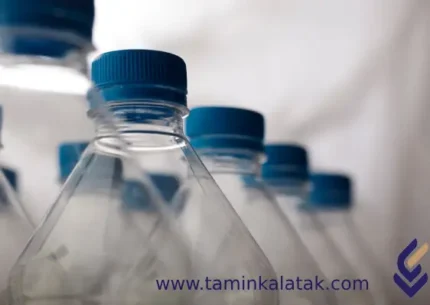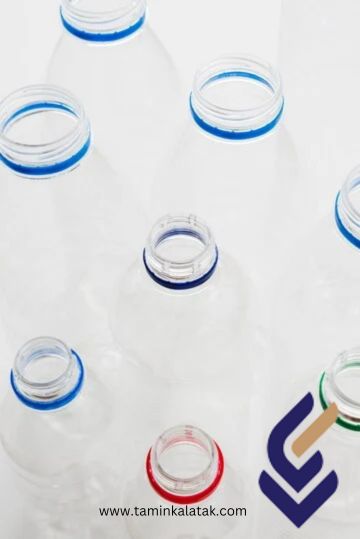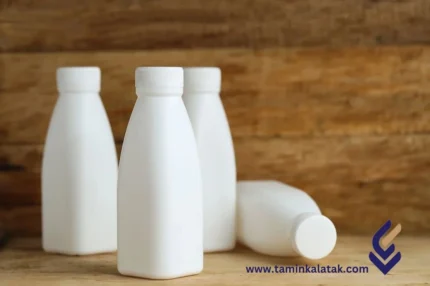Bladder Curing Press & Mould
Bladder Curing Press & Mould is a vital equipment in the rubber manufacturing industry used for shaping and curing rubber parts. This equipment is especially useful in the production of solid rubber and rubber products with complex shapes.
Function of the Bladder Curing Press and MoldMold Preparation: A metal mold designed in the shape of the final part is covered with a release layer so that the rubber part can be easily removed from the mold. Bladder Insertion: A rubber or fireproof fabric bladder is placed inside the mold. This bladder is inflated with an air pump to apply uniform pressure to all parts of the rubber part. Raw Material Insertion: The rubber raw materials that have been previously mixed and prepared are placed into the mold in a raw or semi-cured state. Mold Closure: The mold is tightly closed to ensure that there are no leaks. Applying Pressure and Heat: The bladder is filled with air to apply uniform pressure to the raw materials. At the same time, heat is applied to the mold to cure the raw materials and form the mold. Cooling and Demoulding: After the curing process is completed, the mold is cooled and the rubber part is removed from the mold.
Applications of bladder curing presses and moldsRubber industry: Production of various rubber parts such as gaskets, bushings, cable covers, etc. Automotive industry: Production of automotive rubber parts such as hoses, gaskets, etc. Medical industry: Production of rubber parts for medical equipment. Aerospace industry: Production of rubber parts for the aerospace industry.
Advantages of using bladder curing presses and moldsProduction of high-precision parts: Possibility of producing parts with precise dimensions and tolerances. Mass production: Ability to mass produce identical parts. Product diversity: Possibility of producing different types of parts by changing molds. High quality: The products produced are of high quality.
Blow Molding (BLOW)
Blow molding is a manufacturing process used to create hollow plastic parts by inflating a heated plastic tube (called a parison or preform) inside a mold cavity until it conforms to the shape of the mold. It is widely used for producing bottles, containers, and other hollow objects.
Types of blow moldingContinuous Extrusion Blow Molding (EBM) Process:
- Molten plastic is continuously extruded in a tube-like form (parison).
- A mold clamps around the parison and inflates it with air.
- The part cools and solidifies before being ejected.
- Reciprocating Screw System: The screw moves back and forth to accumulate plastic before pushing it into the mold.
- Accumulator Head System: Plastic is stored in an accumulator before being discharged in a single shot.
- Plastic is first injection molded into a preform (small tube-like shape with a finished neck).
- The preform is then transferred to a blow mold and inflated.
- The final shape is formed, cooled, and ejected.
- Similar to IBM, but includes a stretching step before inflation to improve strength and clarity.
- The preform is reheated, stretched lengthwise, and then blown into shape.
- A parison is extruded and clamped in a mold.
- The parison is stretched both axially (lengthwise) and radially (outward) before being inflated.
Advantages of blow molding
- Cost-Effective Production
- High Efficiency & Fast Production
- Ability to Produce Complex Shapes
- Lightweight and Durable Products
- Versatile Material Usage
- Suitable for Large & Small Products
Disadvantages of blow molding
- Limited to Hollow Shapes
- High Initial Equipment & Mold Costs
- Inconsistent Wall Thickness
- Weak Seams & Stress Points
- Less Precision Compared to Injection Molding
- High Energy Consumption
Applications of blow molding
- packaging Industry: Bottles for beverages, cosmetics, pharmaceuticals, and household products.
- Automotive Industry: Fuel tanks, air ducts, washer fluid reservoirs, and coolant tanks.
- Industrial & Chemical Storage: Drums, barrels, IBCs, and spray bottles.
- Medical & Pharmaceutical: IV bottles, medicine containers, and diagnostic device housings.
- Consumer Goods: Toys, furniture components, water bottles, and detergent containers.
- Construction Industry: Water tanks, septic tanks, pipes, and conduits.
- Agriculture Industry: Pesticide and fertilizer containers, watering cans, and irrigation components.
Bottle Grade
Polyethylene Terephthalate (PET) is a versatile thermoplastic polymer widely used in the packaging industry, particularly for bottle manufacturing. PET bottle-grade resin is a specialized type of PET formulated to meet the requirements of beverage, food, and pharmaceutical packaging. One of the key advantages of PET bottle-grade material is its food-safe quality, ensuring compliance with global regulatory standards like those set by the FDA (Food and Drug Administration) and EFSA (European Food Safety Authority). With growing concerns about sustainability, PET bottle-grade materials are evolving to incorporate higher percentages of recycled content while maintaining their structural integrity and safety.
1.StructurePET (Polyethylene Terephthalate) is a semi-crystalline thermoplastic polymer belonging to the polyester family. The structure of PET bottle-grade material is based on long-chain polymer molecules formed through polycondensation of terephthalic acid (TPA) and ethylene glycol (EG). The repeating unit in PET is: {-O-CH_2-CH_2-O-CO-C_6H_4-CO-} This structure consists of:
- Ester groups (-COO-) → Provide flexibility and durability
- Benzene rings (C₆H₄) → Contribute to rigidity and strength
- Ether bonds (-O-) → Help in processability and thermal stability
2.PropertiesPET (Polyethylene Terephthalate) bottle-grade resin possesses a unique combination of physical, mechanical, thermal, chemical, and barrier properties, making it the preferred material for beverage and food packaging. It is highly transparent, lightweight, and has a smooth surface, providing an attractive and glossy finish for bottles. Mechanically, PET is strong, tough, and resistant to impact and stress-cracking, ensuring durability during handling and transportation. Its flexibility allows easy molding into various bottle shapes while maintaining high stiffness for structural integrity. Thermally, PET has a glass transition temperature of approximately 75–80°C and a melting point of around 250–265°C, making it stable under moderate heat conditions. Chemically, it exhibits excellent resistance to acids, oils, and solvents while maintaining hydrolytic stability in humid environments. Additionally, PET is non-toxic and food-safe, meeting regulatory standards such as those set by the FDA and EFSA. Its superior barrier properties help preserve the quality of packaged products by limiting oxygen and carbon dioxide permeability and preventing moisture absorption.A key advantage of PET bottle-grade material is its recyclability, as it is 100% recyclable and can be processed into recycled PET (rPET), promoting sustainability and reducing environmental impact. These properties collectively make PET an ideal choice for water bottles, soft drink containers, juice packaging, and other consumer goods that require clarity, strength, and food safety.
3. Applications of Bottle Grade PETBottle-grade PET is used across multiple industries due to its versatility and safety.
1. Food & Beverage Industry
Soft Drink & Water Bottles – Carbonated and non-carbonated beverages Dairy & Juice Containers – Milk, yogurt drinks, and fresh juices Edible Oil & Condiment Packaging – Cooking oils, sauces, and vinegar2 Pharmaceutical & Healthcare
Medicine Bottles – Liquid syrups and vitamin supplements Personal Care Packaging – Shampoo, lotion, and cosmetic containers3 Industrial & Chemical Applications
Household & Industrial Chemicals – Detergents, cleaning agents, and solvents Laboratory Containers – Sterile packaging for chemicals and reagents4 Sustainable Packaging & Recycled PET Products
Recycled PET Bottles – Used in textiles, automotive parts, and reusable packaging Eco-Friendly Packaging – Biodegradable and sustainable bottle solutions4. Advantages of Bottle Grade PETBottle-grade PET offers multiple benefits, making it the preferred material for packaging. Cost-Effective: Lower production costs compared to glass and metal Shatterproof & Durable: Reduces breakage risks in transportation and usage Lightweight: Decreases shipping weight and carbon footprint Versatile & Moldable: Easily shaped into different bottle designs Safe for Food Contact: Approved by FDA and EFSA for direct food and beverage use Eco-Friendly: Supports recycling and sustainable initiatives
5. Disadvantages of Bottle Grade PETDespite its benefits, bottle-grade PET has some drawbacks: Environmental Concerns: Improper disposal leads to plastic pollution Heat Sensitivity: Deforms at high temperatures, limiting hot-fill applications Gas Permeability: Less effective than glass in preventing oxygen ingress Chemical Leaching (Low Risk): May release trace amounts of antimony oxide under extreme conditions Recycling Challenges: Requires advanced sorting and processing to maintain quality
Butadiene Rubber BR
Butadiene Rubber is one of the most important types of synthetic rubber that is widely used in various industries due to its unique properties. This rubber is produced from the polymerization of butadiene, an unsaturated hydrocarbon. Butadiene is found naturally in crude oil and is converted into rubber through petrochemical processes.
Butadiene Rubber ApplicationsButadiene rubber is used in various industries due to its unique properties, including the automotive industry, construction, consumer goods production, and ... Some of the most important applications of this rubber are: Automotive industry: production of tires, gaskets, belts, and other automotive parts Construction industry: production of insulation, cable covering, flooring, and ... Consumer goods industry: production of shoes, toys, home appliance parts, and ...
butyl acetate
butyl acetate, also known as butyl ethanoate and butyl ester, is a colorless, liquid substance with a relatively pleasant odor, slightly resembling the smell of fruit (banana), which is highly flammable. This substance is generally used as a solvent for the production of products such as industrial paints, cosmetic varnishes, inks and adhesives. In terms of solubility or solubility, it is easily dissolved in a variety of solvent chemical raw materials such as alcohols, ketones, glycols and esters, but it is not so easy to dissolve in water.
Physical and chemical properties of butyl acetateSolubility: Slightly soluble in water but soluble in many organic solvents such as alcohols, ketones, other esters and aromatic hydrocarbons. Odor: Pleasant fruity odor Density: Lower than water Boiling point: Relatively low Flammability: Highly flammable. Stability: Stable under normal conditions but may react in the presence of strong oxidants.
Butyl acetate applicationsButyl acetate has many applications in various industries due to its unique physical and chemical properties. Some of the most important applications of this substance are: Solvent: paint and coating industries: It is used as a solvent in the production of paints, varnishes, resins and protective coatings. printing industry: It is used as a solvent in printing inks. adhesive industry: It is used as a solvent in the production of various adhesives. pharmaceutical industry: Used as a solvent in the production of some medicines and herbal extracts. Fragrance and flavoring: Used as a flavoring in the food and beverage industries due to its pleasant fruity odor. Used as a fragrance carrier in the production of perfumes and colognes. Cleaner: Used as a solvent in some cleaning products.
Butyl acrylate
Lorem ipsum dolor sit amet, consectetur adipiscing elit. Vestibulum sagittis orci ac odio dictum tincidunt. Donec ut metus leo. Class aptent taciti sociosqu ad litora torquent per conubia nostra, per inceptos himenaeos. Sed luctus, dui eu sagittis sodales, nulla nibh sagittis augue, vel porttitor diam enim non metus. Vestibulum aliquam augue neque. Phasellus tincidunt odio eget ullamcorper efficitur. Cras placerat ut turpis pellentesque vulputate. Nam sed consequat tortor. Curabitur finibus sapien dolor. Ut eleifend tellus nec erat pulvinar dignissim. Nam non arcu purus. Vivamus et massa massa.
Butyl Cellosolve
Butyl Cellosulfur or 2-butoxyethanol is an organic chemical compound that is used in various industries due to its strong solvent properties and diverse applications. This substance is known as a polar and protic solvent and, due to its specific chemical structure, is able to dissolve a wide range of substances.
Physical and chemical propertiesAppearance: A colorless and transparent liquid with a mild odor Solubility: Soluble in water and many organic solvents. Boiling point: It is relatively high, and therefore its evaporation is slow. Viscosity: It has a moderate viscosity. Polarity: High polarity allows this substance to dissolve polar and non-polar compounds.
Butyl cellosulfur applicationsPaint and coating industry: It is used as a solvent for paints, varnishes and industrial coatings. Cleaning industry: It is used in the production of detergents, cleaners and degreasers. Printing industry: Used as a solvent in printing inks. Pharmaceutical industry: Used as a solvent and intermediate in the production of some drugs. Textile industry: Used in dyeing and printing processes of fabrics.
Advantages of using butyl cellosuloHigh solvency power: Ability to dissolve a wide range of materials Moderate evaporation rate: Gives products enough time to dry Compatibility with other solvents: Easily mixes with other solvents Affordable price: More affordable than some other solvents Hazards and safety tips Toxicity: Inhalation, ingestion or skin contact with butyl cellosulo can cause irritation and damage. Flammability: Butyl cellosulo vapors are flammable. Environment: Discharge of this material into the environment can cause water and soil contamination. Safety tips: Gloves, safety glasses and a mask should be worn when working with butyl cellosulo. Also, the workplace should be properly ventilated.
Butyl Diglycol
Butyl Diglycol or BDG is an organic chemical compound that is widely used in various industries as a solvent. This substance is used in many industrial processes due to its unique properties such as high boiling point, good solubility and suitable viscosity.
Physical and chemical propertiesAppearance: A colorless and transparent liquid with a mild odor Solubility: Soluble in water and many organic solvents. Boiling point: Very high, which reduces evaporation and increases the shelf life of the final product. Viscosity: It has a moderate viscosity that gives it good lubricating properties. Stability: It is resistant to heat and oxidation.
Butyl diglycol applicationsPaint and coating industry: Used as a solvent in paints, varnishes and industrial coatings. Improving the flow and uniformity of colors Increasing the durability and resistance of coatings Printing ink industry: Used as a solvent in flexo and rotogravure printing inks. Improves print quality and increases ink adhesion to the surface Cleaning industry: Used in the formulation of detergents, cleaners and degreasers. As a solvent for oils, greases and other contaminants Textile industry: Used as a solvent in fabric dyeing and printing processes. Improves dye penetration into fibers and increases color stability Pharmaceutical industry: Used as a solvent in the production of some drugs and cosmetic products.
Benefits of using butyl diglycolHigh boiling point: Reduces evaporation and increases the shelf life of the final product. Good solubility: Ability to dissolve a wide range of substances Suitable viscosity: Gives the product good lubricating properties Thermal and oxidative stability: Increases the product's shelf life
Butyl Diglycol Acetate
Butyl Diglycol Acetate (BDGA) is an organic chemical compound used as a solvent in various industries. This substance is used in many industrial processes due to its special physical and chemical properties, including high boiling point, good solubility and suitable viscosity.
Physical and chemical propertiesAppearance: A colorless and transparent liquid with a mild fruity odor Solubility: Slightly soluble in water but miscible with many organic solvents. Boiling point: Relatively high, which reduces evaporation and increases the shelf life of the final product. Viscosity: It has a moderate viscosity, which gives it good lubricating properties. Stability: It is resistant to heat and oxidation.
Butyl Diglycol Acetate ApplicationsPaint and Coating Industry: Used as a solvent in paints, varnishes and industrial coatings. Improves the flow and uniformity of colors Increases the durability and resistance of coatings Printing ink industry: Used as a solvent in flexo and rotogravure printing inks. Improves print quality and increases ink adhesion to the surface Cleaning industry: Used in the formulation of detergents, cleaners, and degreasers. As a solvent for oils, greases, and other contaminants Pharmaceutical industry: Used in the production of some drugs and cosmetic and health products. Adhesive industry: Used as a solvent in the production of industrial adhesives. Advantages of using butyl diglycol acetate High boiling point: Reduces evaporation and increases the useful life of the final product. Good solubility: Ability to dissolve a wide range of materials Suitable viscosity: Gives the product good lubricating properties Thermal and oxidative stability: Increases the product's shelf life Mild odor: It has less odor compared to some other solvents.
Butyl Glycol
Butyl Glycol or 2-butoxyethanol is an organic chemical compound that is used as a solvent in various industries due to its specific physical and chemical properties. This substance is used in many industrial processes due to its high boiling point, good solubility and suitable viscosity.
Physical and chemical propertiesAppearance: A colorless and transparent liquid with a mild odor Solubility: Soluble in water and many organic solvents. Boiling point: Relatively high, which reduces evaporation and increases the useful life of the final product. Viscosity: It has a moderate viscosity that gives it good lubricating properties. Stability: It is resistant to heat and oxidation.
Butyl glycol applicationsPaint and coating industry: Used as a solvent in paints, varnishes and industrial coatings. Improving the flow and uniformity of colors Increasing the durability and resistance of coatings Printing ink industry: Used as a solvent in flexo and rotogravure printing inks. Improves print quality and increases ink adhesion to the surface Cleaning industry: Used in the formulation of detergents, cleaners and degreasers. As a solvent for oils, greases and other contaminants Pharmaceutical industry: Used in the production of some medicines and cosmetic products. Textile industry: Used as a solvent in fabric dyeing and printing processes. Improves dye penetration into fibers and increases color stability Benefits of using butyl glycol High boiling point: Reduces evaporation and increases the useful life of the final product. Good solubility: Ability to dissolve a wide range of substances Suitable viscosity: Gives the product good lubricating properties Thermal and oxidative stability: Increases the product's lifespan
Butyl Glycol Acetate
Butyl glycol acetate, also known as butoxyethanol acetate or butoxyethyl acetate, is a clear, colorless liquid with a faint ester odor. This compound is widely used in various industries due to its chemical properties.
Properties and ApplicationsHigh boiling point and low volatility Ability to dissolve in a wide range of solvents such as alcohols, aldehydes, ketones, ethers, glycols and glycol acids
Applications Butyl glycol acetate
- Paint and printing industries: As a solvent and auxiliary material for the production of paints and inks
- Resin production: As a raw material in the production of various resins
- Coatings and adhesives: For the formulation of various industrial coatings and adhesives
- Cosmetics and health products: As an additive in the production of cosmetic and health products
- Agricultural pesticides and cleaners: As a solvent in the production of agricultural products and cleaning materials
Butyl Reclaimed Rubber
Butyl Reclaim Rubber is a sustainable and environmentally friendly material derived from discarded butyl rubber products through a rigorous reclamation process. This eco-friendly process involves collecting, sorting, grinding, devulcanizing, and refining discarded rubber, ultimately transforming it into a reusable resource. Despite being recycled, butyl reclaim rubber retains many properties of its original form, making it valuable for various applications. Its creation addresses the need to reduce waste and promote sustainability in rubber production.
Butyl Reclaim Rubber is also a sustainable and environmentally friendly material that is obtained from discarded butyl rubber products through a careful recovery process.
- Sustainability
- Durability
- Versatility
- Cost-Effectiveness











